Previously, I posted photographs of Kirkwall, Rousay, brochs, cairns and stone circles on the Orkney Islands. I have yet more photographs to get through from my trip away in early May, so I thought I'd post some more. You can, of course, read my old entries here: Orkney Islands: Italian Chapel and Kirkwall, Orkney Islands: Rousay, Cairns, Mills and Farms, and Orkney Islands: Birsay, Gurness, Brodgar and Cuween Hill.
Today's photographs focus on the ancient Neolithic settlement of Skara Brae, the coasts of Yesnaby, the village of Stromness and Ophir round church.
We will start with Skara Brae, the best-preserved Neolithic settlement. The settlement was accidently discovered as high winds ripped the upper layers of sand and soil from the ruins. The settlement is located on the coast, looking out to the sea. Hard to imagine, but the settlement is older than Stonehenge and the Great Pyramids.

One of the houses at Skara Brae
The houses in Skara Brae had home furnishings, such as shelving (on the right of the photograph above). They also had holes, lined with stones in the floors for live bait (or keeping food fresh). The areas lined with slabs of stone along the walls were probably filled with animal skins and used as beds. All of the houses were very similar in layout and size, showing that everyone in the settlement was probably of equal status and conformed.
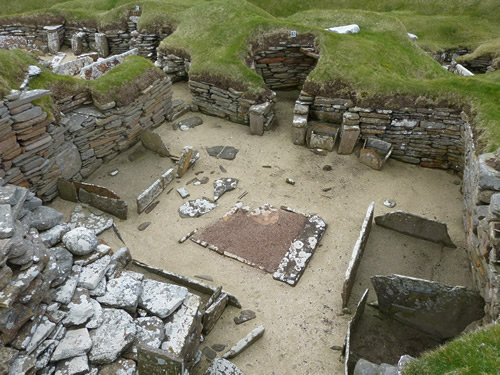
Another house at Skara Brae
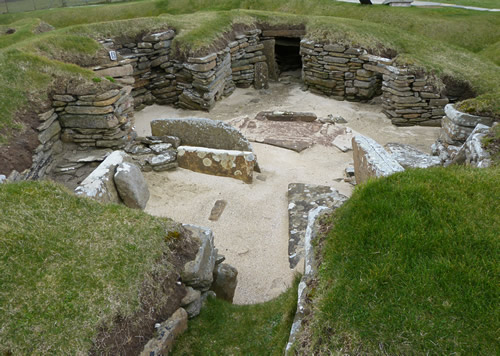
Another view of a house with part of the covered street
Another important fact about Skara Brae is that a series of covered streets connected one house to the next.
After the visit to Skara Brae, I drove to Yesnaby, the western coast of the main Orkney Island. This coastal area has many high cliffs and sea stacks, and it is the perfect place to walk. (With better weather, it would have been nice to walk further to visit some brochs that exist on this stretch of coast), but two nice sea stacks are only a short walk from the main parking area.
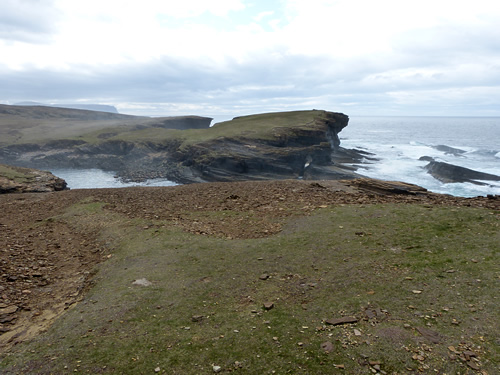
Yesnaby coast
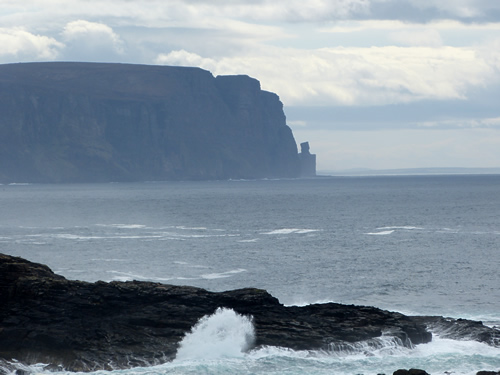
A sea stack in the distance along Yesnaby coast
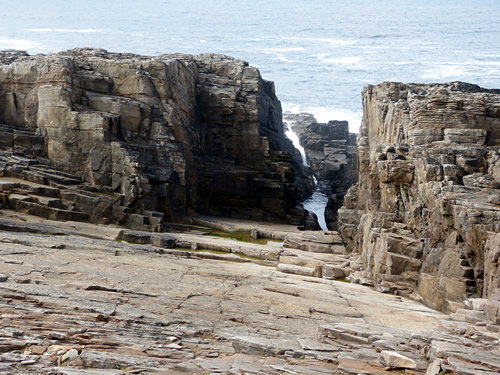
Eroded cliffs near the sea with impressive waves
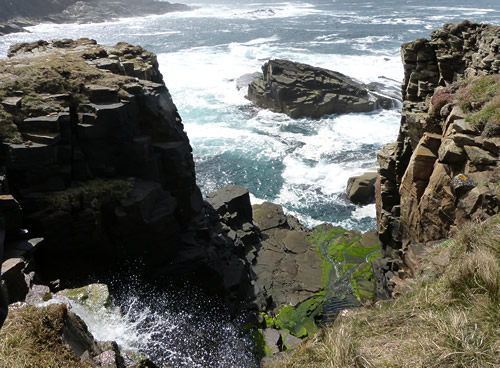
A waterfall cascades down the cliff
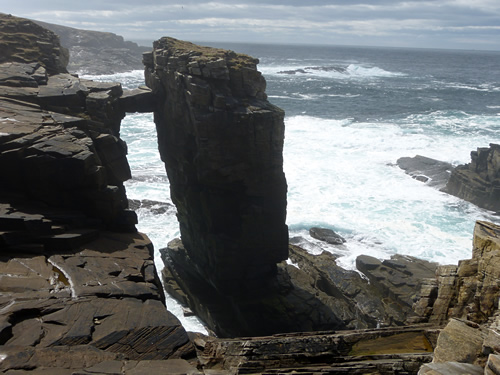
This sea stack at Yesnaby was connected to the main land by a small strip of rock

Another view of the sea stack
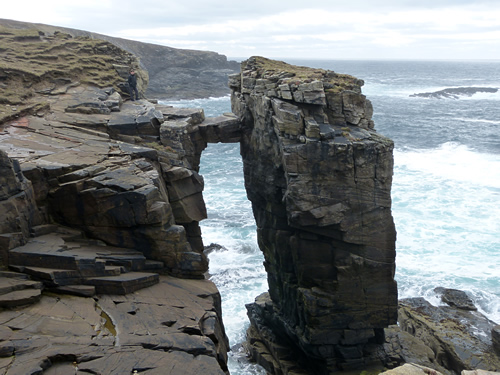
Another view of the sea stack
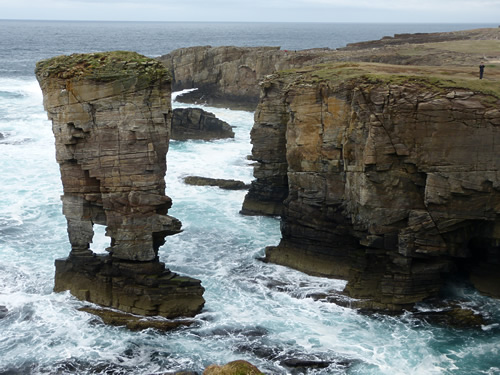
A second sea stack with a hole in the base; it was nice to watch the water raise and enter this hole in the stone
After visiting the coast, I went to explore the coastal town of Stromness. Stromness has a picturesque harbour, and the town has history in pirates and smuggling. The Scapa Flow, the area of sea out of Stromness, is noted for many shipwrecks. As our visit was on a Sunday, unfortunately, many of the shops were shut.
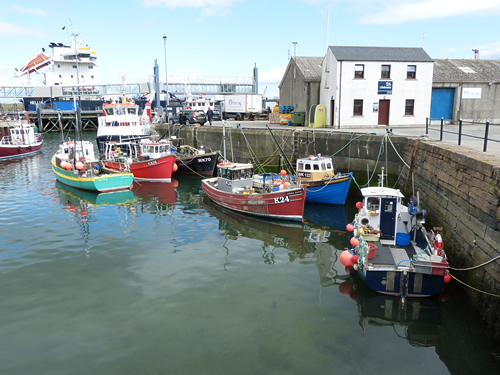
Stromness harbour
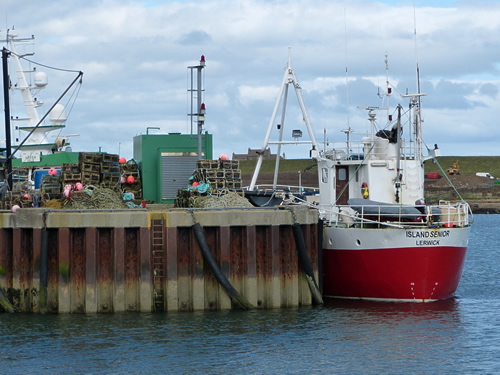
A fishing boat moored at Stromness harbour
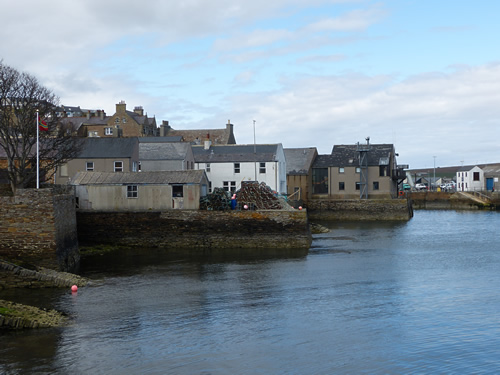
Stromness
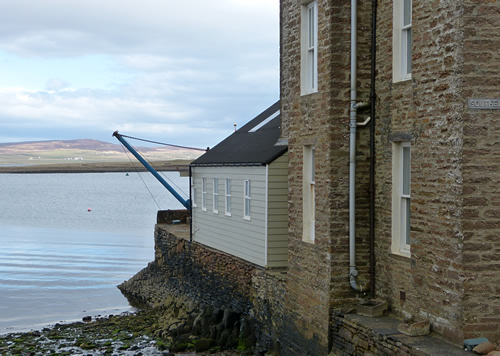
Looking out to sea at Stromness
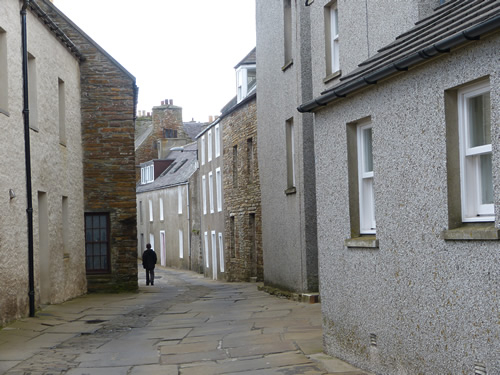
Walking down the main street in Stromness
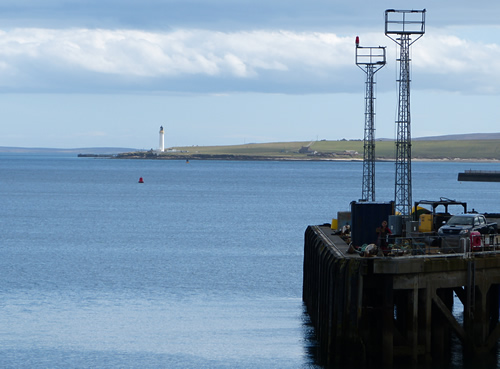
A lighthouse
The last place visited on the way out of Stromness was Ophir, the remains of a Norse round church. There was once a large hall here where people would come to have drink and food. A museum is next to the church and where the hall stood.
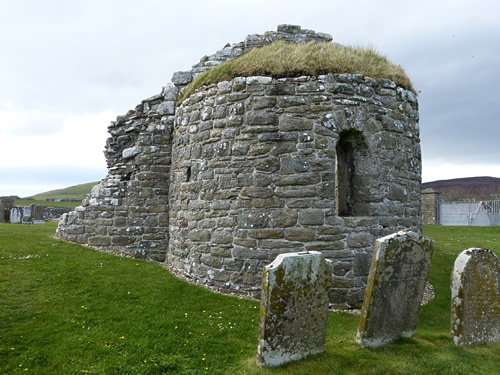
Ophir round church
I hope you've enjoyed the photographs.
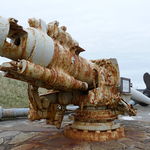
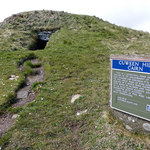
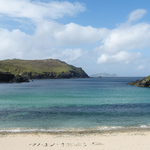
Leave a comment